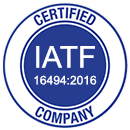Blog on the Latest Rubber Topics and Design Technologies
The Coi Rubber Blog is where you’ll learn about molded rubber products and more. Topics include molded part design, elastomer selection, and injection, compression, and transfer molding of custom rubber products for OEMs.
What is Rubber?
Rubber is a polymer which can stretch and shrink. It occurs naturally and can be synthesized as well. We have been using rubber products since ancient times. But during the 19th century it became a highly useful industrial raw product for various purposes.
Types of Rubber
Rubber can be divided into following two types based on its origin –
-
Natural Rubber
-
Synthetic Rubber
There is a wide variety of synthetic rubber available such as EPDM (Ethylene Propylene Diene Monomer) rubber, commercial black rubber, SBR (Styrene butadiene rubber), NBR (nitrile butadiene rubber), IIR (Isobutylene-isoprene) etc.
What is Natural Rubber?
Natural rubber is a natural polymer of organic compound isoprene obtained from the bark of tropical and subtropical trees. The milky white fluid which is obtained from trees is called latex. This is the reason natural rubber is also known as latex. Natural rubber is also called India rubber, Amazonian rubber and caucho. Leading producers of natural rubber are Thailand and Indonesia.
Monomer Unit of Natural Rubber – 2-methyl 1,3-butadiene (it is also called isoprene)
Structure of Natural Rubber – It is called polyisoprene or cis-1,4-polyisoprene. Its structure is given below –
Preparation of Natural Rubber
Natural rubber or rubber latex is directly collected from plants. Then it is processed for common use by various methods. It is a polymer of 2-methyl 1,3-butadiene (or isoprene). It was all about rubber, if you are looking for study material of chemistry then register yourself on Vedantu or download Vedantu learning app for class 6-10, IITJEE and NEET. By doing so you can get access to free PDFs of NCERT Solutions of Chemistry, Mock tests, Revision notes etc.
In the rubber business, one of the most common terms you will encounter is rubber durometer. Durometer is both a measure of hardness of the material and the instrument used to measure it. A rubber durometer can be used to measure the hardness of not only solid rubber but also cellular rubber (e.g. foams, sponges), plastics, […]
What is the difference between hot runner vs cold runner systems? With the increasing cost of steel and raw materials, supply chain professionals are often looking for options to reduce part prices, cycle times, and material waste. Cold runner systems may be a cost saving solution compared to hot runner systems for the right application. […]
Introduction Rubber molding processes, such as extrusions, compression molding, or injection molding, take liquid raw rubber into a mold where the rubber is then cured into the mold shape by heat and pressure. As such, the mold cavity is cut to represent the desired geometry of the molded rubber product. Products such as o-rings, seals, […]
What are the factors that affect the tolerances of molded rubber products? Many factors in the manufacturing process can affect the tolerances of the molded rubber product. In general, the consistency of dimensions will be contingent on the rubber material, mold tool, product design, and conditions of measurement. Shrinkage All rubber go through some degree […]
Natural Rubber (NR) is usually the material of choice in vibration and noise damping applications due to their excellence in strength and resilience. However, technological strides have been leading to ever smaller equipment and compartments, therefore decreasing the available airflow for components. This has led to rising temperatures under the hood, exposing the limited stability […]
Definitions Resilience is the percent of energy required for a deformed pieces of rubber to rebound back to its original shape after a deformation. Hysteresis is the percent of energy loss per each deformation. Hysteresis results from friction happening inside the rubber which creates heat build-up. The heat build-up in the rubber is measured as […]
Custom rubber molding is the best choice for medical devices for a number of reasons. Medical device developers can define the most appropriate flexibility, fit, appearance, chemical resistance, and other features for their product. Custom rubber molding for medical devices would be able to give the highest quality product that can perform better, be more […]
Rubber molding is used to make almost endless types of items such as shoes, football gear, car parts, etc. It is eye-opening how nearly everything we use contains some type of rubber component. Natural rubber can be harvested then processed into usable and versatile rubber; however, natural rubber contains proteins which may cause sensitivity in […]
Hoses, tubes, and pipes can be vulnerable to damage by repeated flexing or friction, exposure to the environment, and contamination by foreign materials. Damage to hoses, tubes, and pipes can certainly lead to safety issues as well. Aside from abrasions, grommets are also used in applications where hoses, wiring, and cables need insulation, vibration protection, […]
Perhaps you’ve heard high quality product should have “tight tolerance,” but do you really know what level of tolerance is suitable for your product? Depending on the end use of the product, tight tolerances may or may not be necessary for the product. Most consumer type products do not require more than the standard tolerance, […]








